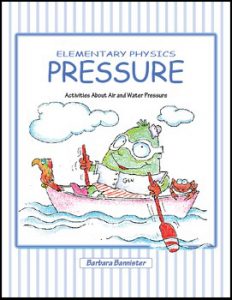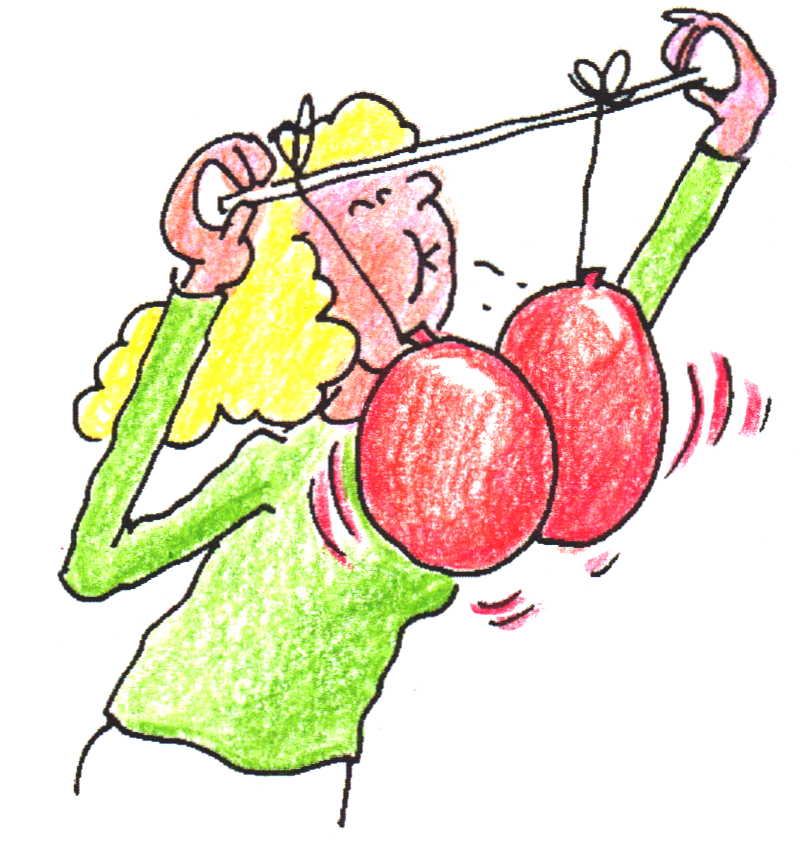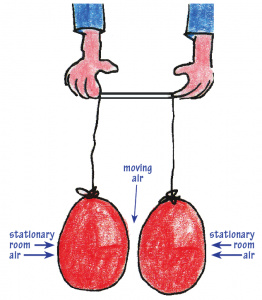Another fun demonstration to add to a science unit, use for a science night, or show students just for fun. No prep time or materials? Use the videos at the end of this post to prompt a conversation about science!
Depending on the age of your students this could be demonstrated by a small team of capable students. All you need is two balloons of the same size, about a meter of string, and a drinking straw. The materials are so common students will be able to repeat the activity at home. 🙂
|
|
Inflate two balloons to the same size. Tie a string to one and thread the string through a straw. Tie the other end of the string to the second balloon. The balloons should be about 2 cm apart. Blow very gently between the balloons, and you’ll see the balloons move together. For a quick preview of the activity, watch the video I made with my sixth grade niece. What’s Happening? The air between the balloons does not push sideways with the same force as it moves forward. The air on the sides of the balloons pushes the balloons together. Note: Depending on the size of the balloons you might choose to tie them to the straw as shown in the featured image. |
ENGINEERING CONNECTION
Because they understand Bernoulli’s principle, engineers manipulate air pressure in their designs to control and stabilize everything from rockets, to helicopters, to blimps. When designing airplane wings, engineers shape them so that they create lift. Even cars and trains are designed to take advantage of this principle, helping these moving vehicles stay on the ground at high speeds.
 |
Check out these additional resources that can help you customize the activity for your students: a short video of the activity shown from above the balloons, a demonstration of the activity that includes information about how a change in air pressure that can damage the roof of a building, or a student demonstrating with LARGE balloons and a reversed vacuum cleaner. Would you like an easy way to teach your students about Bernoulli’s Principle? A product that includes activities, a video overview, student texts that have been recorded, suggestions for assessments, and a web page with more? Consider: Elementary Physics Pressure. The activities that are some of my students’ favorites and they are easily adapted to an after school STEM class, a family science night, or an open house! |



Thank you for the excellent article
Hi Barb! This format is soooo cool! Looks great, even on my “split screen” phone.